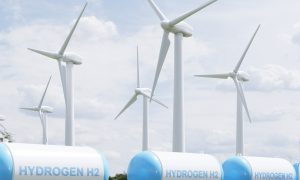Namibia Govt seeks ‘cautious’ funding for green hydrogen

Namibia is advancing its green hydrogen economy, using innovative financing tools like donor funding and concessionary capital. While donor funding won’t increase debt, concessionary loans could add pressure to the country’s rising debt levels. The Namibia Green Hydrogen Programme aims to create 85,000 jobs by 2030, with ongoing pilot projects and investments in vocational training to support the sector’s growth.
Government is strategically positioning itself to become a leader in the burgeoning global green hydrogen economy.
To support the necessary infrastructure for this sector, government is exploring a variety of innovative financing tools, including donor funding and concessionary capital. The latter, however, comes with a cautionary note that it will increase the already-skyrocketing national debt level. The Namibia Green Hydrogen Programme states that these financing avenues include tapping into donor funding, which would not increase government debt.
Concessionary capital from institutions like the World Bank and European Investment Bank have the potential to wreak havoc on already-overburdened debt levels.
“Such arrangements allow government to borrow at rates close to AAA, substantially lower than current market rates,” reads the report from the Programme. The Bank of Namibia has noted that government debt stock stood at N$157.6 billion at the end of June 2024, representing an increase of 8.3% when compared to the same time in the previous fiscal year.
The rise in external debt was mainly ascribed to the disbursement of a German development agency loan for budget support, as well as for direct project financing.
The central bank noted that on a quarterly basis, total central government debt rose by 2.5% from N$153.8 billion, mainly owing to a rise in domestic debt.
Total debt as a percentage of gross domestic product (GDP), declined by 1.1 percentage point on a yearly basis to 61.3% at the end of June 2024, owing to faster growth in GDP compared to the rise in debt over the period under review. Thus, the nature of the funding for green hydrogen will directly impact government’s debt levels.
“Depending on the nature of the funding received/utilised, government debt may increase. If funding from donor sources is tapped into, then the debt is not growing. However, when concessionary capital, backed by government guarantees, are used, then the size of the debt will grow,” the document from the Programme states.
Government’s approach aligns with global trends in financing renewable energy projects.
This includes innovative models such as blended finance, green bonds and public-private partnerships, which are gaining traction in developing countries.These models have been shown to not only attract private investment, but to mitigate risks associated with perceived uncertainties in renewable energy projects.
Competition
Hyphen Energy’s CEO Marco Raffinetti emphasised that Namibia’s approach to competition with countries like South Africa is unique.
“There is no competition. Each country has its uniqueness,” he stated during a recent presentation to journalists in Lüderitz.
He underscored the need for tailored policies to attract investments that suit Namibia’s distinct landscape.
Toni Beukes, Hyphen’s head of environment, social and governance, highlighted a significant gap in the local workforce. “About 60% of the people needed during the construction phase are from vocational backgrounds,” she noted.
However, she pointed out that many qualifications do not equate to necessary skills. To address this, Hyphen plans substantial investments in training initiatives to ensure that Namibians are equipped to lead in this emerging sector.
The Namibia Green Hydrogen Programme states that the green hydrogen and derivatives, industry can potentially create an estimated 85 000 direct jobs by 2030, and 185 000 by 2040 (mostly in construction, business services, transportation and durable manufacturing), and 60 000 indirect jobs from additional spending in the economy by 2030, rising to 130 000 in 2040.
Programme spokesperson Jona Musheko confirmed to this publication that over 400 people have been employed in the eight active green hydrogen pilot projects in the country as at September 2024.
Read more: Govt seeks ‘cautious’ funding for green hydrogen https://neweralive.na/govt-seeks-cautious-funding-for-green-hydrogen
Source Link : https://neweralive.na/govt-seeks-cautious-funding-for-green-hydrogen/

















